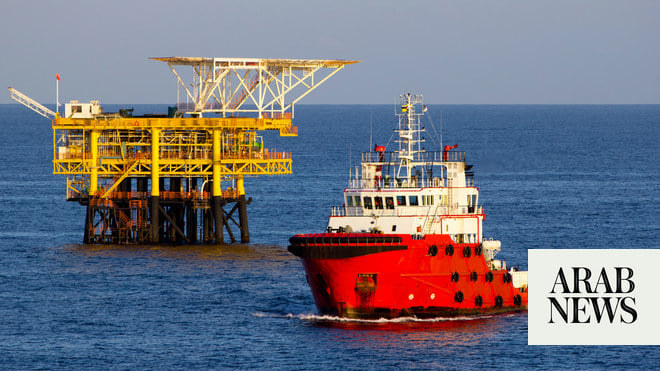
As the Organization of the Petroleum Exporting Countries (OPEC) turns 60 years old this week, the organisation and its 10 allied member countries known as OPEC+ will hold a virtual meeting of its Joint Ministerial Monitoring Committee (JMMC), which is tasked with monitoring compliance of their supply cuts currently standing at 7.7 million barrels per day (bpd).
The meeting comes as oil markets have declined for two consecutive weeks for the first time since April. Between Sept. 1 and Sept. 8 alone, futures for ICE Brent and WTI lost 15 and 16 percent respectively. The price seems to have found a range of around $40 per barrel for Brent and $37 per barrel for WTI, down from $45 and $40 respectively in August. Mid-day Monday CET Brent traded at $39.55 and WTI at $37.04.
The fall in prices was in part triggered by a sharp fall in global equity markets, dampening investors’ appetite for risk assets, but there is much more behind it — namely a gloomy outlook for oil demand.
While demand rose in early summer from very low levels, it has been flattening across the board in August. It stalled in the US during the driving season, which usually provides a big boost. We have to go back to 1998 to find fuel demand from US drivers this low. It stalled in China too with the country importing less crude. The whole world is in the thralls of the pandemic, not just the US. The outlook is not getting better in India; European nations are tightening restrictions and Israel is going into a new lockdown lasting three weeks. None of the above bodes well for demand.
BP has just released its annual global energy outlook, where it introduced three scenarios for oil demand, none of which look good: In its “business as usual” case, demand is forecast to plateau by the early 2020s. In the other two cases the pandemic accelerates reaction to societal pressures and environmental concerns. In those cases, oil demand will not return to its pre-pandemic levels of around 100 million bpd at the end of 2019.
We can be certain that members of the JMMC will read the BP report carefully, because demand is really what counts right now.
For now, and at this week’s JMMC, it may well be about compliance, because it would be difficult to turn the wheel back. This is not the fault of OPEC+, it is just a sign that the virus has a mind of its own, which feeds directly into demand patterns.
Cornelia Meyer
While compliance with supply cuts was good according to S&P Global Platts, at 97 percent for OPEC and 98 percent for OPEC+, this is not the whole story. Drilling down, we can see that countries not complying, namely Iraq and Nigeria, were asked to compensate the amounts they had overproduced within Q3. This did not happen. Again, according to S&P Global Platts, Nigeria produced 70,000 bpd above its quota, which is a far cry from its obligations to OPEC+. Nigeria argues that the 160,000 bpd of the Agbami grade crude should be exempt, but given the numbers involved that is neither here nor there. Iraq produced 50,000 bpd below its original quota which is still 350,000 bpd above the 3.4 million bpd required according to the compensation schedule.
Saudi Arabia and the UAE also produced more, saying the demand increase was due to the hot summer as a reason. Saudi Arabia produced 500,000 bpd more but still stayed below its quota, while the UAE exceeded its quota by around 20 percent. Abu Dhabi promises to correct the error and the case will most certainly be settled discreetly, behind closed doors and between Gulf Cooperation Cooperation (GCC) friends.
Where does this leave the JMMC? It can only monitor, rather than set quotas. That would require a full-fledged ministerial conference. The next one is set for late November/early December. This is why the JMMC may choose to leave matters as they are, because it would be difficult to reach a new consensus between member countries, which had to sacrifice a lot when they agreed to the historic production cuts in April.
At the April meeting of OPEC+, ministers agreed to production cuts of 9.7 million bpd for May and June. The downward sliding scale envisaged cuts of 7.7 million bpd for the remainder of 2020 and of 5.8 million bpd through to April 2021. These concessions came in the aftermath of WTI having temporarily slipped to minus $32, which shook oil markets, and beyond, to their core. The cuts helped oil markets to display an impressive rally.
OPEC+ extended the 9.7 million bpd for a further month in July, but reduced the quota to 7.7 million bpd in August according to schedule.
In hindsight that relaxation might have been a little premature. There were not just the 2 million bpd of incremental demand hitting the market. Saudi Arabia, the UAE and Bahrain also scrapped the 1.2 million bpd cut that they had made above and beyond the agreed quotas and on a voluntary, one-time basis. This led to more than 3 million incremental barrels hitting the market. It could have worked, if the laggards in OPEC+ had compensated for their overproduction according to schedule. Alas this was not to happen.
Hindsight is always 20:20: When the decisions were taken in June, the International Energy Agency (IEA) had talked about a slight demand overhang and inventories were drawing nicely. In last month’s oil report, the agency made sight downward revisions to its demand forecasts.
Since July, the virus has struck back, leaving great uncertainty for the economic outlook. According to the US Energy Information Agency, crude inventories in the US had been building again for the first time in 7 weeks the week before last. Nobody could have foreseen this turn of events.
For now, and at this week’s JMMC, it may well be about compliance, because it would be difficult to turn the wheel back. This is not the fault of OPEC+, it is just a sign that the virus has a mind of its own, which feeds directly into demand patterns.
* Cornelia Meyer is a Ph.D.-level economist with 30 years of experience in investment banking and industry. She is chairperson and CEO of business consultancy Meyer Resources. Twitter: @MeyerResources
Disclaimer: Views expressed by writers in this section are their own and do not necessarily reflect Arab News" point-of-view












